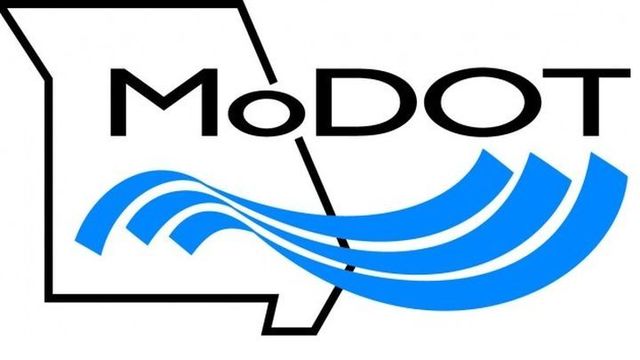Despite a historic increase in revenue, Missouri has only enough money to maintain its transportation infrastructure while making modest, or desperately needed, improvements.
The Missouri Department of Transportation (MoDOT) recently released a draft five-year spending plan for road and bridge projects. The Statewide Transportation Improvement Program (STIP) proposes spending about $7.6 billion from fiscal 2023 through fiscal 2027.
The public is invited to weigh in on the plan before it’s considered by the Highways and Transportation Commission in early July.
Historic investments
MoDOT’s five-year plan factors in recent revenue increases from the state gas tax and a big bump in federal money.
Congress authorizes transportation funding every five years. In the fall of 2021, the Bipartisan Infrastructure Bill increased the amount of money Missouri will get.
A $2 billion raise
Also, in 2021 the Missouri Legislature agreed to increase the state’s motor fuel tax 2.5¢ a year for five years. That marked the first gas tax increase for Missouri since 1996. The higher fuel tax and new federal money increase MoDOT’s budget by 50 percent.
Finally, the state legislature, at Governor Mike Parson’s request, budgeted $100 million for Missouri’s rural roads. If the governor approves the spending plan, the money would mark a third swell in funding MoDOT was without last year.
MoDOT Transportation Planning Director Eric Curtit said the revenue increases finally will allow the state to maintain the transportation system, ensure the safety of motorists and make improvements to boost economic development.
“We want to make sure that we capitalize on that by ensuring the No. 1 priority of Missourians is met. And that is taking care of what we have first, and then where it’s appropriate, and where we have resources, to expand the system,” Curtit said.
Needs exceed resources
“Transportation needs greatly outweigh funding available,” the introduction of MoDOT’s 665-page plan states.
The document goes on to say that “while $7.65 billion of available funding represents a significant investment, many regions will only have adequate funding to maintain current pavement and bridge conditions.”
Inflation, plus years of insufficient funding, caused the situation.
Curtit said this push and pull between transportation demands and available funding is nothing new. He noted that a MoDOT memo from the 1960s expressed the same concern.
“This is something that will always be and always has been in transportation,” Curtit said. “Needs always will far exceed resources.”
Steve Hobbs is the executive director of the Missouri Association of Counties and a former Audrain County commissioner. He called the plan aggressive and said he’s glad MoDOT finally will be able to address places where maintenance has been lacking.
Although MoDOT is forced to be selective with what projects to fund, Hobbs said the department works closely with local officials when making tough choices.
“They really do value that input from the counties on what projects are needed in their community,” Hobbs said. “We feel like we’re a major stakeholder in this process. We’re really excited about the opportunity to actually get some projects — that have been needed to be done for 15, 20 years — we might actually have the wherewithal now to get some of those needed projects done.”
Long-desired projects
The five-year plan targets improvements that have been long sought. MoDOT proposes committing $140 million to update the interchange where Interstate 70 and US 63 meet in Columbia, for example.
Greg Edington, director of the Boone County Road and Bridge Department, said that the interchange regularly faces bottlenecks and that addressing the interchange is long overdue.
“I think it’s outlived its capacity,” Edington said.
Curtit said Missourians have complained about that intersection, along with other problem spots in the state. The new funding allows MoDOT to finally tackle those projects.
Focus on maintenance
A large goal of the program is to maintain existing pavement and bridge conditions. Curtit said this strategy is important so conditions don’t become even more costly to fix.
“Asset management, the system that we use, is to keep good good,” Curtit said. “Because the cost of keeping good good is much less than letting things fail, and then coming back and rehabbing and reconstructing.”
Hobbs, of the Missouri Association of Counties, applauds the effort to make maintenance a priority and compares it to how people care for their own belongings.
“If you don’t change the oil in your car, it may run for a long time, but it’s gonna fail eventually,” Hobbs said.
Lettered routes in north Missouri
The state transportation department notes a disparity in the quality of low-volume routes across Missouri. The new improvement proposal indicates minor routes in the worst condition will be prioritized for upgrades.
The MoDOT plan directs $130 million toward minor and low-volume routes that carry fewer than 400 vehicles a day and account for over 11,000 miles of Missouri’s state roads. Lettered routes, or farm-to-market roads, are often low-volume routes in rural areas.
Hobbs said increased truck traffic, along with deferred maintenance on lettered routes in northern Missouri, has left them in bad shape.
“They (MoDOT) have fallen behind north of I-70 on lettered routes, those farm-to-market roads, and they’re at risk of losing some of those right now,” Hobbs said. “Truck traffic is just increased in size and weight, and they haven’t been re-decked in 20 years.”
Curtit said MoDOT rates the quality of a road’s pavement. The department hopes to bring 70 percent of state-maintained, low-volume routes up to “good” condition in the next two to three years.
“We’re at about 53 percent in the Northwest district and about 64 percent in the Northeast district,” Curtit said.
Missouri Farm Bureau President Garrett Hawkins said lettered routes are not only essential to get agricultural products to market but also to get people from town to home and kids to and from school in rural Missouri. The declining quality of farm-to-market routes worries Farm Bureau members statewide.
“It’s not just the potholes or the uneven surface. It’s those crumbling shoulders that have been consistently what we have heard about the most,” Hawkins said.
Hawkins operates a family livestock farm in Appleton City, about 90 minutes south of Kansas City. He said rough roads worry him when he transports cattle.
“Some of these back roads very much force me to drive white knuckled in the sense that I have to make sure that I’m staying focused, because a tire slipping off of a crumbling shoulder could be a very, very dangerous situation,” Hawkins said.
Missouri is the second leading state in hay production, and it produces large amounts of soybeans, corn, beef and swine. The agriculture industry depends on reliable infrastructure to get those products to consumers.
Bridges
Of the 10,387 bridges in the state of Missouri, 823 are in poor condition.
Through his role at the counties association, Hobbs said he sees how the diversity of Missouri leads to a variety of transportation needs.
“You may have an urban county like St. Louis County that is dealing with a lot of paved roads, or you might have a county in north Missouri that doesn’t have any paved roads at all,” Hobbs said.
Hobbs, however, said there is one infrastructure obstacle that unites counties. “What they do all have in common is they have bridges.”
Hobbs called bridges the “big-ticket items” for counties because most are not in a financial position to fund bridge replacements and upgrades themselves.
Jana Rose Schleis is a graduate student studying investigative journalism, government reporting and public policy at the University of Missouri – Columbia. Reporting for the Missouri News Network on a project, that explores the impact of state government on Missouri residents.





Facebook Comments